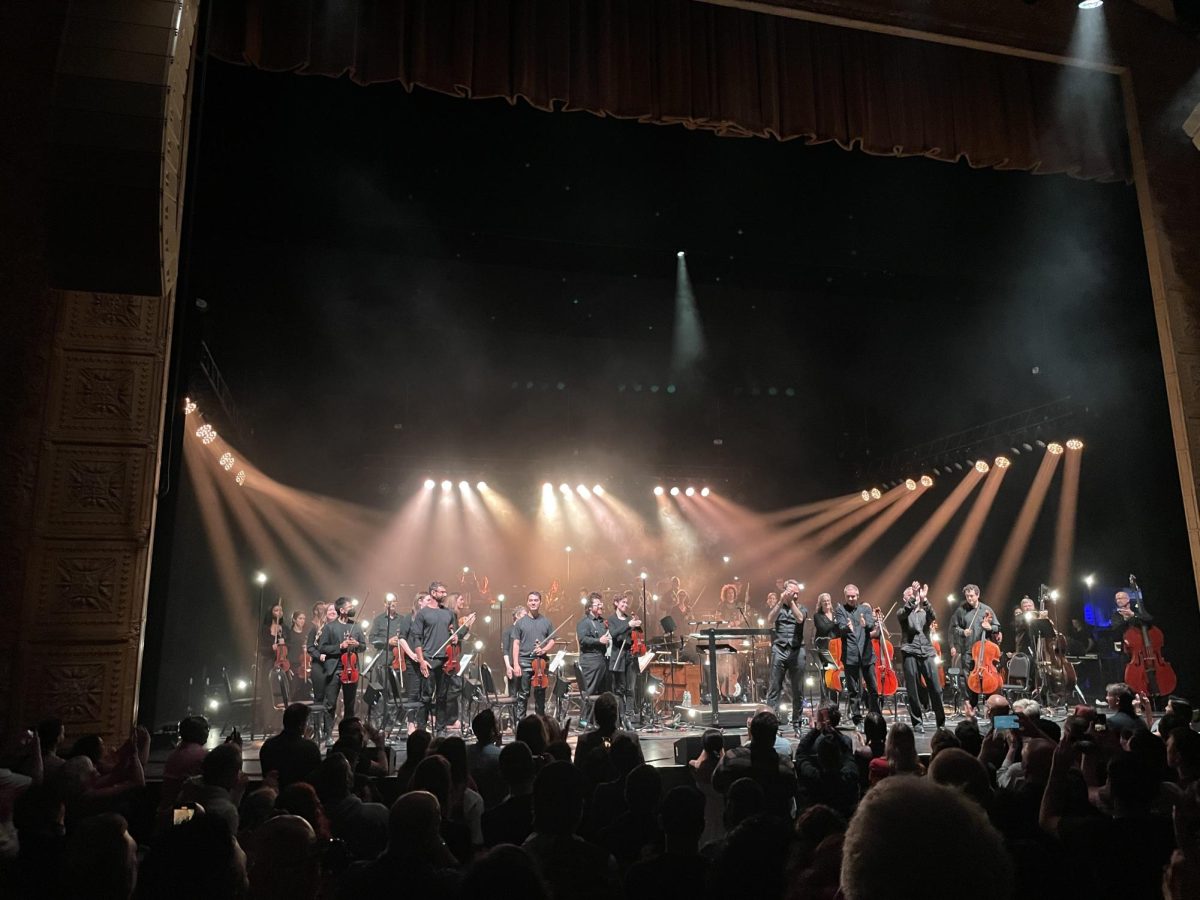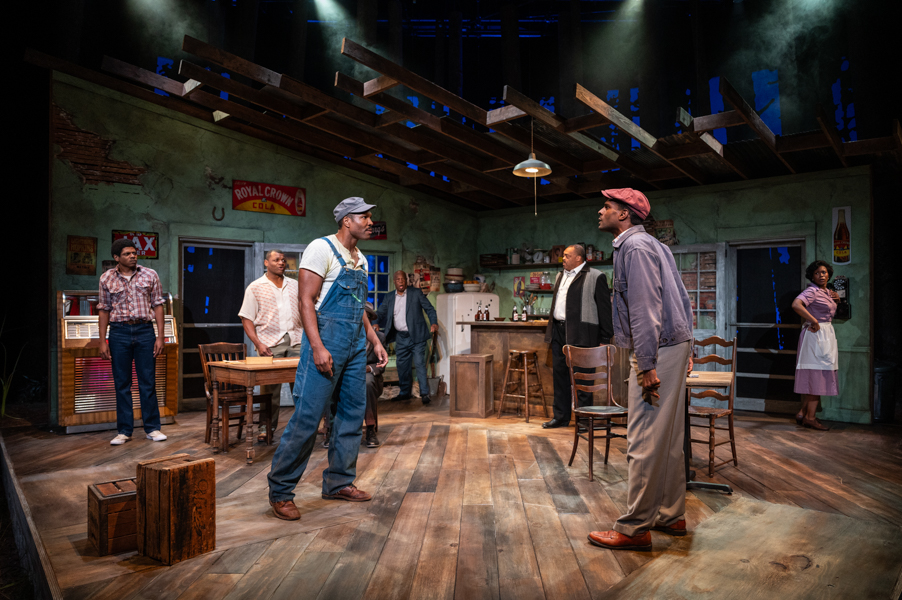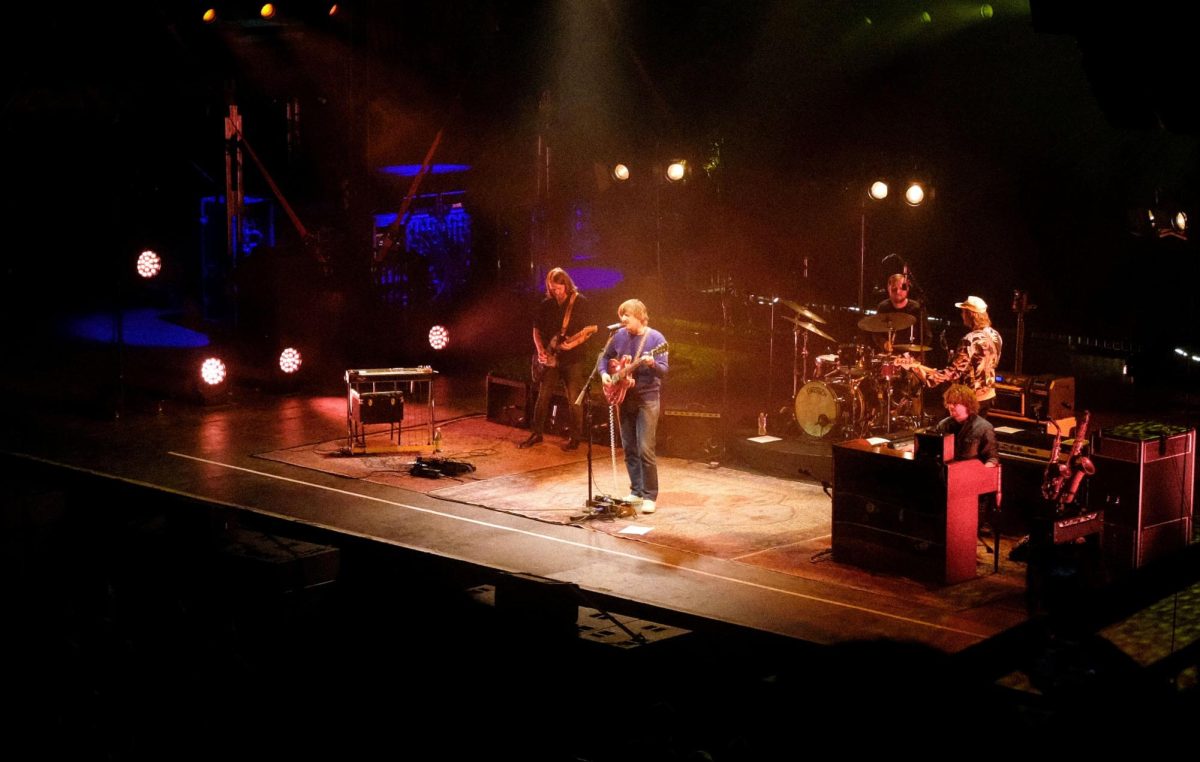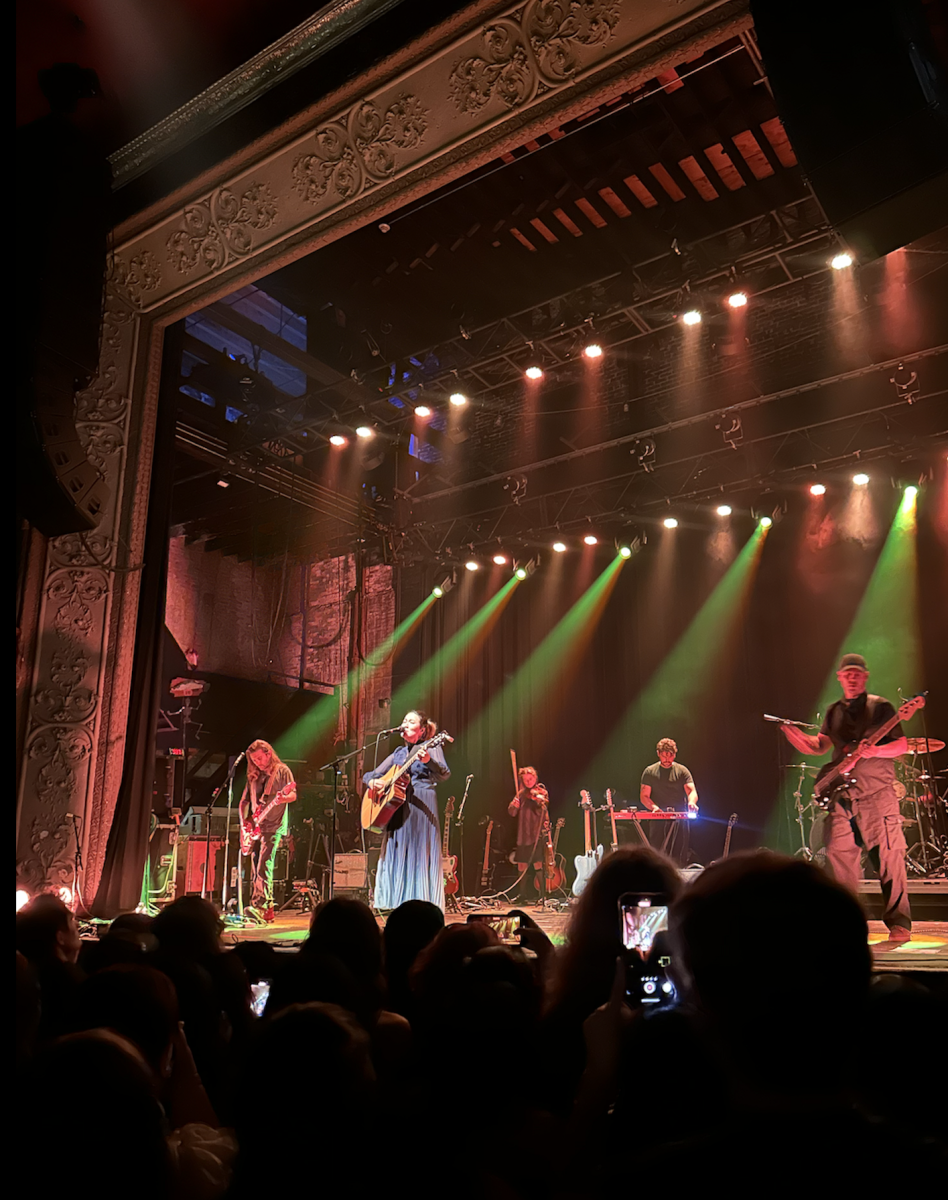The Museum of Contemporary Art (MCA) is now showing the first U.S. retrospective of the work of photographer Wolfgang Tillmans. The German-born, London-based photographer first became known in the early ’90s for documenting the nascent acid-house club scene with which he was involved. His photographs can be seen in commercial art galleries as well as fashion and culture magazines.
For Tillmans, the installation of his work is just as important as the work itself. The MCA allowed Tillmans to design the architecture of two main first-floor galleries, and he kept a foam model of these galleries in his studio to play around with the placing of his photographs until he found a relationship that worked.
Very much like an acid-house DJ, Tillmans samples and mixes images. Old images, such as those of his friends Lutz and Alex and his deceased boyfriend Jochen, appear alongside his newer works, such as abstract photographs made without a camera. Some are large ink-jet prints on thin, brittle paper, others are hung by clips, and some are framed. One room contains what he calls a “truth study centre,” where tables display newspaper clippings, letters, and photographs. By placing photos of different media and sizes side by side, he shows that he does not privilege one over another. As Tillmans stated at the MCA last Thursday, “It is a challenge to the viewer to decide what you like best.”
Many older works in the show have been acknowledged for capturing the look and spirit of the subculture of which he was a part. In Suzanne and Lutz, white dress, army skirt (1993), both subjects wear combat boots and inexpensive, do-it-yourself odds and ends. The photograph reveals how the clothes reflected the alternative lifestyle and new attitude of the young. In Smokin’ Jo (1995), a woman wearing a sparkling silver top stares assuredly at the camera. Jo’s style and gaze (as that of most of Tillmans’s subjects) reveals her pride in the independent way she has chosen to present herself to the world. He shows that through one’s personal choices—the places one frequents, the clothes one wears, the friends one keeps—one can achieve a degree of individuality.
Tillmans shows that his subjects maintain their individuality in their less assertive poses as well. He finds this avoidance of objectification in those moments of daily life in which one is just being oneself. His subjects exhibit this state most often in times of leisure, such as Jochen taking a bath (1997). This holds true for his portraits of celebrities. He shows Damon Albarn, the lead singer of Blur, in the shower, and he portrays Kate Moss not as a fashion icon, but wearing sandals and smiling.
There is a great tenderness in Tillmans’s photos. This feeling is clearly observed in Christos, Athens (1992). Christos, a young Greek boy, stands before a wall covered by peeling paint and graffiti. He stands on a stoop (emphasizing his youth and small stature). There is a cockiness to the way he has sharply turned his hat, the way he holds his cigarette. But his features are softened by his inward stare and the shadow creeping across his face. It’s apparent that the photographer feels complete sympathy for him. For Tillmans, the act of taking pictures is a human exchange, not an act of objectification or commodification.
Tillmans’s subjects are often shown as part of a community. This is evident from his early photos of the club scene, which portray a group formed of communal happiness, dancing, drinking, smoking, and kissing. Thus, his subjects’ lifestyle choices transcend their assertion of individuality to find a higher fulfillment in belonging to a group. In Lutz, Alex, Suzanne and Christoph on beach (1993), all four subjects rest against one another, forming a circle. Each individual seems to need the others, and it is difficult to tell where one begins and another ends. Their genders are ambiguous. They blend together in a unity of vulnerability and affection. In the acid-house scene in particular, Tillmans saw the hope for a new type of society. But from the start, he did not limit his photos to this community. He has captured people brought together through sexual preferences, religious beliefs, and political views.
Tillmans still believes it is possible to find beauty in the world. This is not an idealized beauty but one existing in simple, everyday situations. His photos show beauty as experienced in an encounter with material reality. It can be seen in a wrinkled T-shirt, in shiny tomatoes, or in a sweaty armpit.
With his camera, Tillmans creates situations that show hope for what is socially possible. For him, photography has the potential to achieve the kind of utopian melding-together that he experienced in the acid-house clubs. The final image in his Concorde series shows a man peering up at the plane with the metaphorical name. The worm-eye angle of the shot makes the photographer’s presence known. As the viewer finds this image, his vision joins with that of the subject and the artist. In this way, Tillmans has provided a space for all to come together in a brief moment of revelation.







